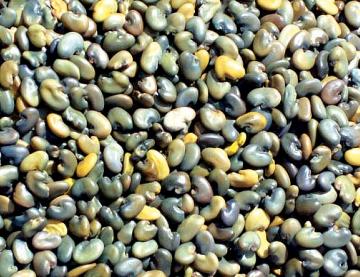
Sun hemp seeds (Crotalaria juncea)
Common names: Sun hemp, Indian hemp, Madras hemp
Local names: Hindi: San, Sonai Manipuri: Chingenjhin Bengali: Shon, Sanpat Malayalam: Chanaka, Vakku Marathi: Tag Oriya: Sanpat Telgu: Gilaka, Shanama, Janumu Kannada: Pundi, Saab Tamil: Vakkunnar
Sun hemp is a rapid growing crop that is used for fibre production in Indo-Pakistan. Sun hemp originated in India, where it has been grown since the dawn of agriculture. It is also good for use as a green manure in many tropical and subtropical areas in the world as an organic and nitrogen source. It suppresses weeds, slows soil erosion, and reduces root-knot nematode population. The pods are small and inflated, having stiff hairs. It is commonly grown in India as fodder. Sun hemp seeds after crushing can be fed to cattle but feeding as such is not palatable. This can, however be mixed with other palatable feedstuffs in concentrate mixture for feeding of cattle.
Nutritive value
Sun hemp seed contains 71% TDN and 40.3% CP. The lysine and methionine content is 4.7 and 1.7% (on protein basis), respectively.
Deleterious factor
Sun hemp contains pyrrolizidine alkaloids, which are converted by oxidases or cytochrome P450 system of the liver into potent toxins (Mannetje, 2004). Seeds also contain trypsin inhibitor and ‘Retusamine-N-oxide’ - an alkaloid (Chaudhury et al., 2005).
Inclusion
Intake of sun hemp hay by cattle should be restricted to about 10% of their diet (Reddy et al. 1999).
